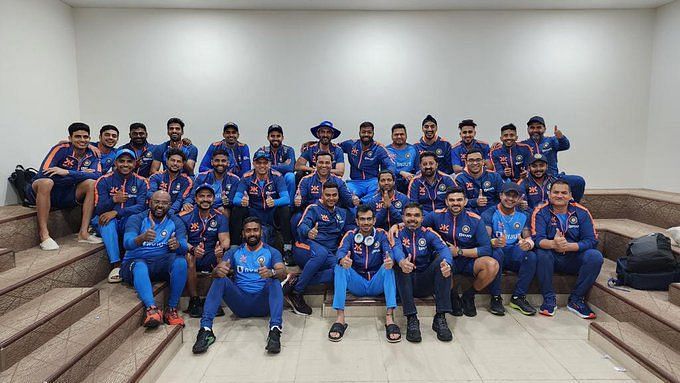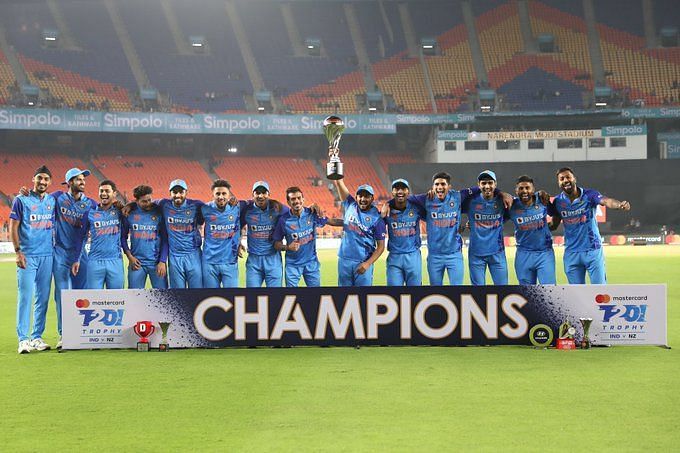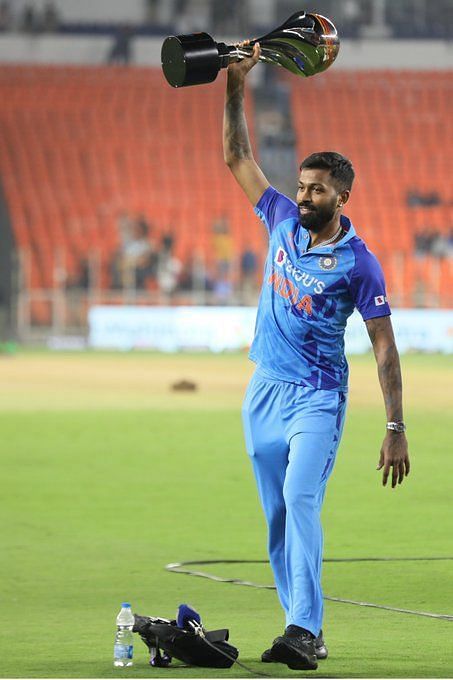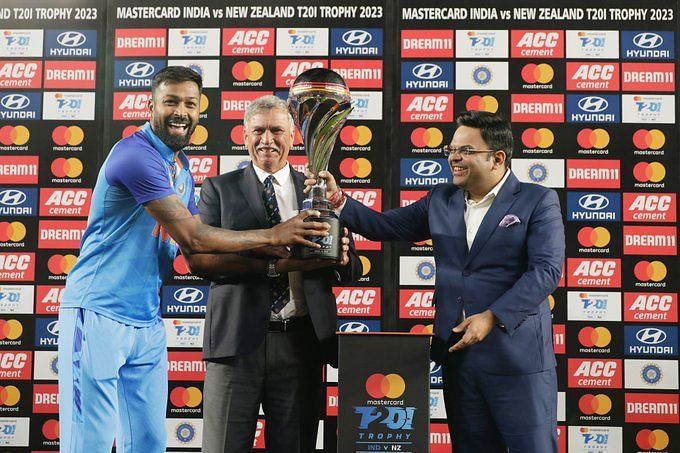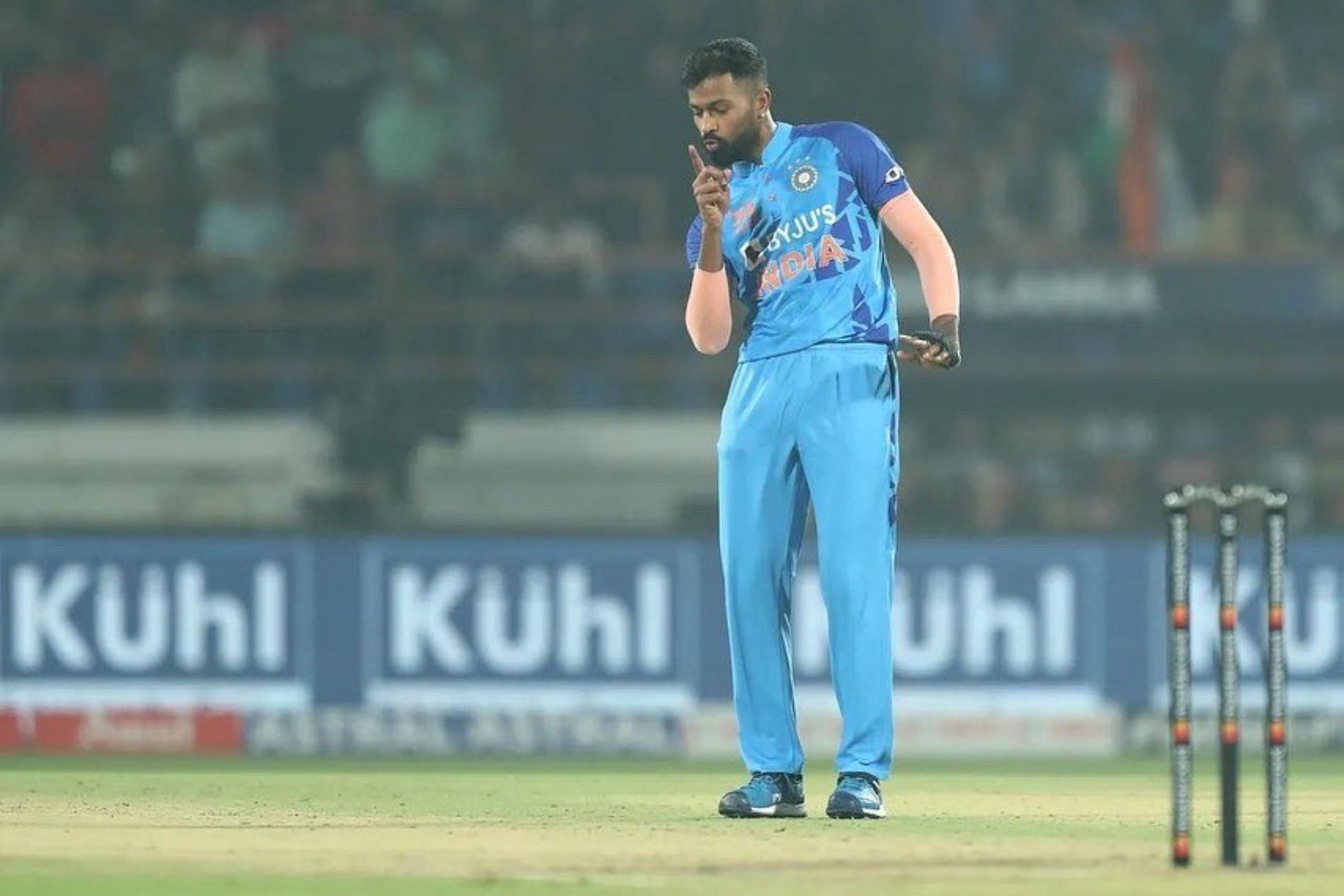
3 reasons why Hardik Pandya should not open the bowling for India in T20Is
Team India’s T20I captain Hardik Pandya came up with a brilliant bowling performance in the series decider against New Zealand at the Narendra Modi Stadium in Ahmedabad on Wednesday, February 1. After Shubman Gill’s brilliant 126* off 63 balls lifted the Men in Blue to 234/4, Hardik claimed 4/16 as the Kiwis were bundled out for a paltry 66 in 12.1 overs.
Opening the bowling, Hardik dismissed Finn Allen (three) and Glenn Phillips (two) in his first spell, before returning to claim the scalps of Lockie Ferguson (0) and Blair Tickner (one). The right-arm pacer had opened the bowling in the previous two T20Is of the series as well, registering figures of 0/33 and 1/25, respectively.
Before the series against New Zealand, the Indian captain opened the bowling in the T20Is against Sri Lanka as well, claiming three wickets in two matches. To his credit, Hardik has done a good job since taking over the responsibility of starting the innings with the ball in T20Is.
However, we analyze three reasons why he is better off not opening the bowling for Team India in the shortest format.
#1 It can’t be a long-term plan
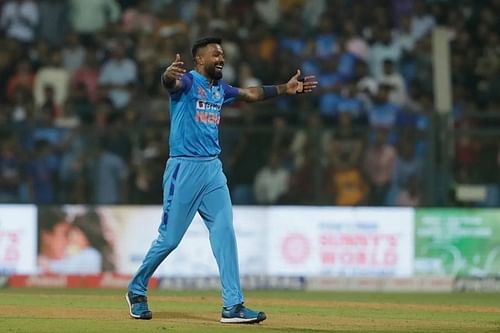
Yes, Team India are currently focused on the 50-over format, keeping the 2023 ODI World Cup on home soil in mind. But they must not completely ignore preparations for the 2024 T20 World Cup to be played in the West Indies and the United States. Keeping the T20 World Cup in mind, Hardik opening the bowling in T20Is doesn’t seem like a long-term plan.
It is important to reiterate here that he has done little wrong with the new ball. However, when it comes to looking at the larger scenario, the big question is - does Hardik as an opening bowler fit into the scheme of things? When Team India’s full-strength team is available, Jasprit Bumrah, Mohammed Siraj, or maybe even Mohammed Shami, could open the bowling with Arshdeep Singh.
As for Hardik, it is all but certain that he will go back to being the third seamer in Team India’s T20I playing XI. Being that way, it would serve the team better if he sticks to the role he is expected to perform at the T20 World Cup next year.
#2 A frontline pacer’s role is reduced
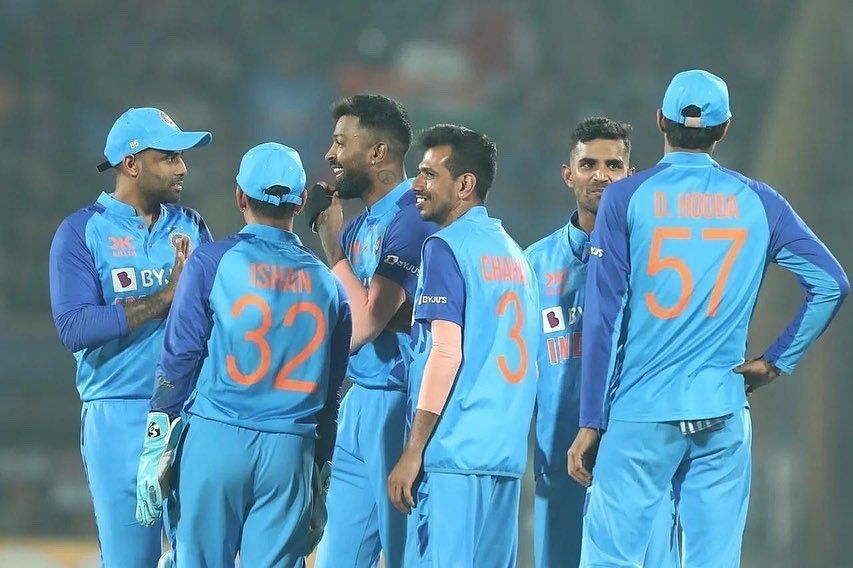
Due to the nature of the surface in the first two T20I matches against New Zealand, India’s under-utilization of one of its frontline seamers went pretty much unnoticed.
While Hardik opened the bowling, fast bowler Shivam Mavi came in to bowl in the 14th over in the opening game in Ranchi. Picked as a frontline pacer in the team, he was brought in as the seventh bowling option and ended up bowling only two overs.
In the second T20I in Lucknow, he bowled only one over, that too the 19th one of New Zealand’s innings. In other words, he was almost a non-playing member of the team despite being part of the playing XI. With spin not playing a huge part in Ahmedabad, Mavi managed to chip in with two overs of the 12 India bowled.
Mavi's bizarre under-utilization got swept under the carpet as the Men in Blue clinched a thumping win in Ahmedabad to come back from 0-1 down to claim another white-ball bilateral series.
However, an honest analysis could lead to the conclusion that things could have gone wrong, and in a pretty embarrassing manner at that.
#3 Hardik is a proven performer as a third pacer
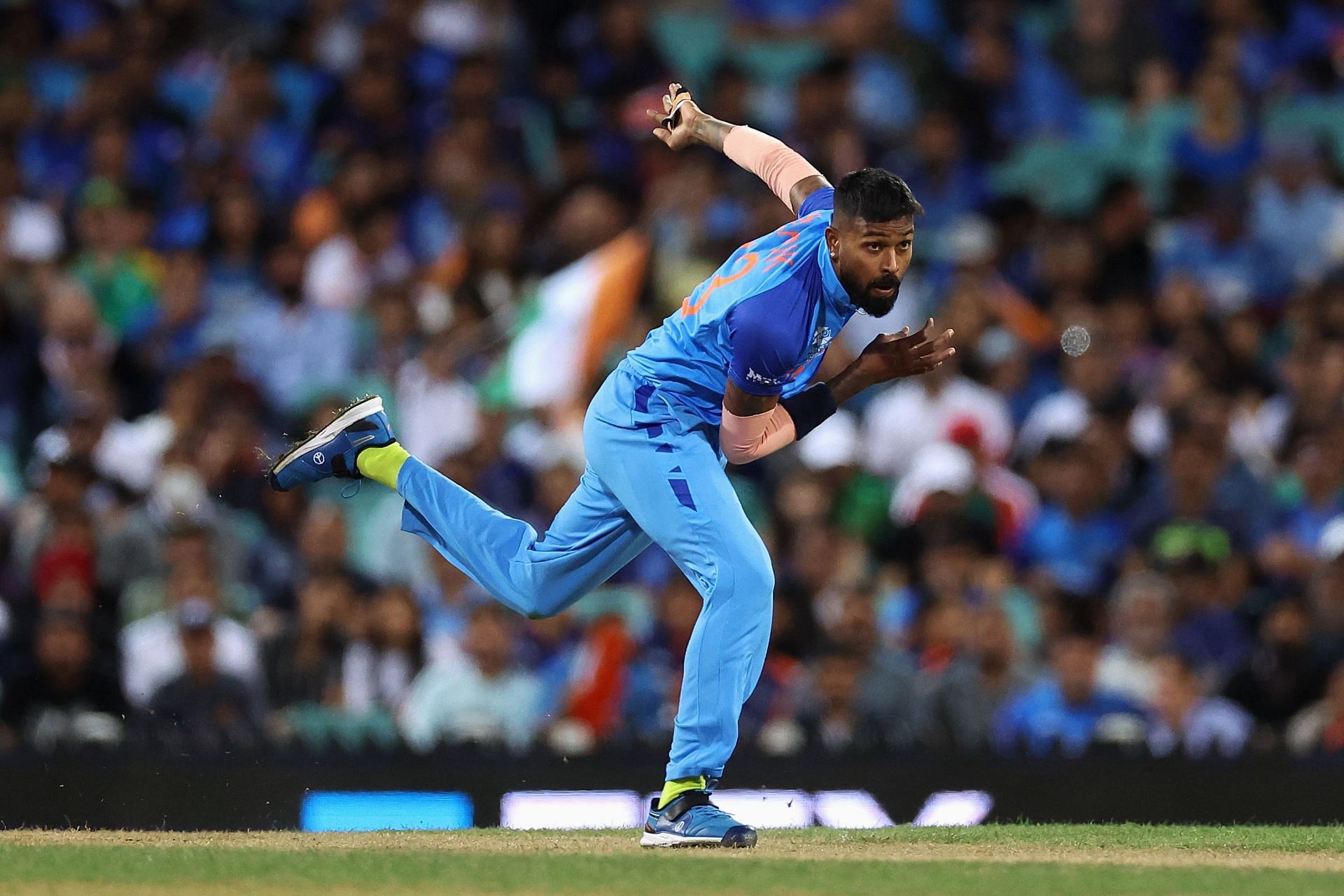
Hardik deserves praise for stepping up as a leader and taking up the responsibility of opening the bowling against Sri Lanka and New Zealand. But the sooner he reverts to the third seamer role, the better it will be for Team India.
The 29-year-old has had his battles with injuries and fitness issues, which have prevented him from bowling regularly in the past. But when fit, he has been a great asset for India as the third seamer option, especially in T20Is.
Often, he has come in and delivered crucial strikes for the team, backing the team’s opening bowlers. With his slippery pace, he has often caught batters off-guard. Hardik coming in as the first-change bowler makes the bowling attack look a lot more settled.
While the T20I skipper has made it clear that he is 'open' to experimenting, opening bowling is one area where Team India need consistency and clarity for long-term success.
Also Read: 3 takeaways from Team India's T20I series win against New Zealand
